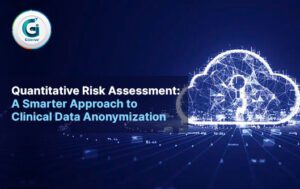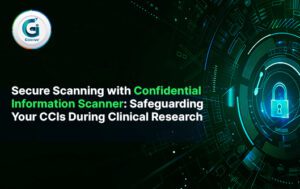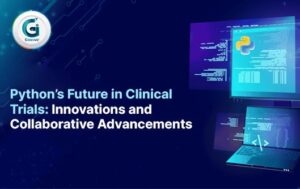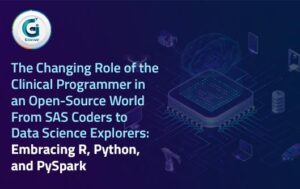By Ramandeep Dhami, Business Manager
While data anonymization is an essential technique for protecting privacy, there are several emerging challenges that need to be addressed:
- Re-identification attacks: As adversaries become more sophisticated, there is an increasing risk of re-identification attacks. Attackers can combine anonymized datasets with external information sources or use advanced techniques, such as machine learning algorithms, to re-identify individuals. Addressing these attacks requires developing more robust anonymization methods that can withstand sophisticated re-identification attempts.
- Contextual information: Traditional anonymization approaches focus primarily on removing or altering direct identifiers, such as names and social security numbers. However, contextual information, such as combinations of indirect identifiers or background knowledge, can still lead to re-identification. Protecting against these contextual risks requires considering the relationships and interdependencies between data attributes during the anonymization process.
- Data linkage: Anonymized datasets can still be vulnerable to data linkage attacks, where an attacker combines multiple datasets to re-identify individuals. As data sharing and integration become more common, it is crucial to develop techniques that can mitigate the risk of data linkage and preserve privacy across linked datasets.
- Big data and high-dimensional data: The increasing volume, variety, and dimensionality of data pose unique challenges for anonymization. Traditional anonymization methods may not be scalable or effective in handling big data or high-dimensional datasets. Developing scalable and efficient anonymization techniques that can handle large-scale and complex data is crucial for addressing these challenges.
- Emerging data types and sources: With the proliferation of new data types and sources, such as IoT devices, social media, and sensor data, anonymization techniques need to adapt and evolve. These new data types often contain rich and unique information that can pose additional privacy risks. Anonymization methods must be updated to handle these emerging data types effectively.
- Regulatory compliance: Privacy regulations, such as the General Data Protection Regulation (GDPR) and the California Consumer Privacy Act (CCPA), impose strict requirements for data anonymization. Ensuring compliance with these regulations can be challenging, as the interpretation and enforcement of anonymization standards may vary. Organizations must stay up to date with evolving regulatory frameworks and implement anonymization techniques that meet the compliance requirements.
Software Solutions such as Shadow (Data Anonymization Tool)
Software tools play a crucial role in overcoming challenges in data anonymization. They provide practical solutions and techniques to implement effective anonymization methods. Here are some ways software tools can help overcome challenges in data anonymization:
- Advanced anonymization algorithms: Software tools often incorporate advanced anonymization algorithms that can withstand de-identification attacks and provide stronger privacy guarantees. These algorithms employ techniques such as generalization, suppression, noise addition, and data perturbation to anonymize sensitive attributes while preserving data utility. These tools automate the anonymization process and ensure that the resulting dataset maintains a good balance between privacy and utility.
- Differential privacy libraries: Differential privacy has gained popularity as a robust privacy framework. Software tools often provide libraries or modules that implement differential privacy mechanisms. These libraries allow data analysts and researchers to apply differential privacy directly to their datasets and queries. They handle the mathematical calculations and noise addition required to achieve differential privacy, making it easier for users to incorporate this privacy-enhancing technique into their workflow.
- Synthetic data generation tools: Synthetic data generation has emerged as an innovative approach to data anonymization. Software tools that specialize in synthetic data generation leverage generative models like Variational Autoencoders (VAEs) and Generative Adversarial Networks (GANs). These tools allow users to generate realistic synthetic datasets that preserve the statistical properties of the original data while ensuring privacy. Synthetic data generation tools provide options for customizing the level of privacy and enabling data users to work with representative datasets without accessing sensitive information.
- Privacy-preserving machine learning frameworks: Software tools are being developed to facilitate privacy-preserving machine learning. These frameworks employ techniques like secure multi-party computation, federated learning, and homomorphic encryption. They allow multiple parties to collaborate on model training while preserving the privacy of their individual data. Privacy-preserving machine learning tools handle the complexities of secure computation and encryption, enabling users to train models on sensitive data without exposing the underlying information.
- Data anonymization platforms: Dedicated data anonymization platforms provide end-to-end solutions for anonymizing datasets. These platforms often offer a range of features, including automated data discovery, sensitive attribute identification, anonymization algorithm selection, and data utility assessment. They provide a user-friendly interface to define privacy policies, configure anonymization techniques, and monitor the effectiveness of the anonymization process. Data anonymization platforms streamline the anonymization workflow, making it easier for organizations to implement privacy measures.
- Privacy impact assessment tools: To ensure compliance with privacy regulations and standards, software tools are available for conducting privacy impact assessments (PIAs). These tools help organizations assess the privacy risks associated with their data processing activities and evaluate the effectiveness of their anonymization techniques. PIAs often include features for identifying potential re-identification risks, evaluating data utility, and generating reports to demonstrate compliance. Privacy impact assessment tools assist organizations in making informed decisions about data anonymization and ensuring that privacy risks are effectively managed.
Conclusion
Overall, the emerging challenges and innovations in data anonymization aim to address the evolving privacy landscape and provide robust solutions for protecting sensitive information while enabling valuable data analysis and research.
Software tools play a vital role in overcoming challenges in data anonymization by providing efficient and scalable solutions. They simplify the anonymization process, enable the application of advanced privacy techniques, and assist organizations in achieving a balance between privacy protection and data utility.


























